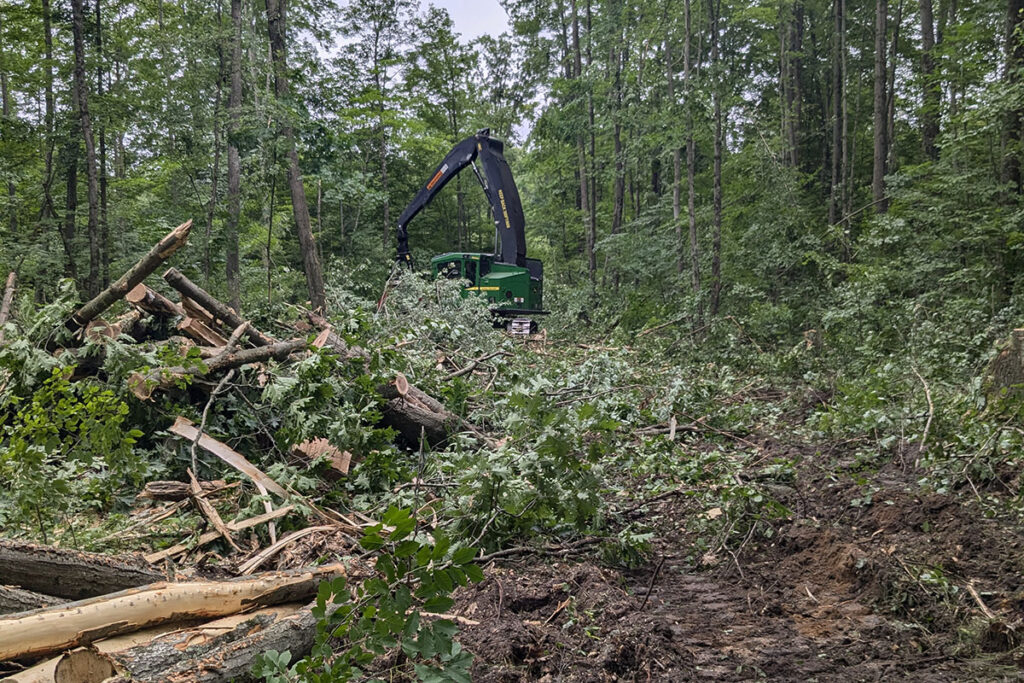We just wrapped up a job thinning a densely forested property located in Morley, Michigan, just east of the Croton area and west of US 131. The property is 120 acres and is a type of swampy area with mostly hardwood trees such as Oak and Maple. Here is the step by step forestry service process that we completed for this customer, including how the project was initiated, where it started, the time it took to complete, and the finished result.
Step 1: Initial Call from a Timber Buyer
This project was initiated by one of our standing timber buyers who passed by the area and noticed the dark, dense patch of the forest looked like it needed to be thinned in order to maintain a healthy ecosystem. Our buyer Jeff contacted the property owner and let him know that we could help him increase wildlife activity by thinning the areas that aren’t seeing growth, as well as take down diseased trees that are affected by oak wilt so they don’t spread to the surrounding healthy younger oak trees.
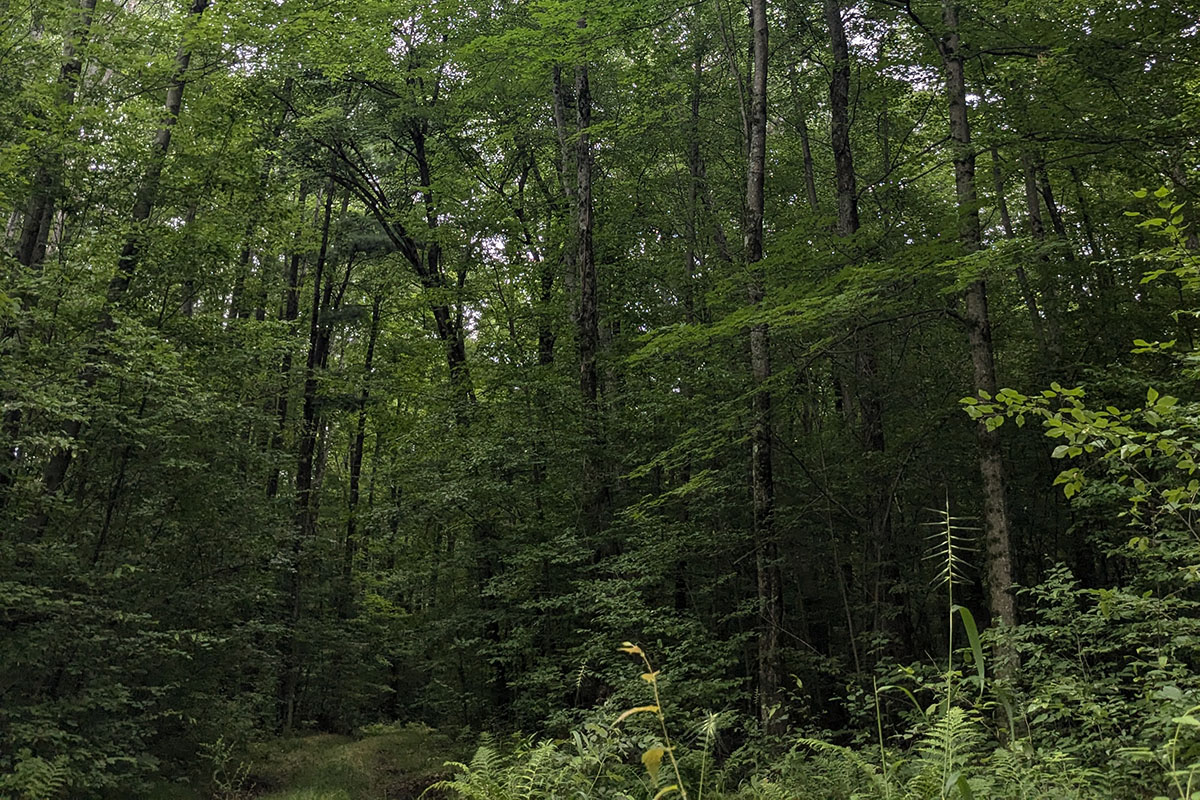
If you ever receive a call from one of our timber buyers, feel free to ask them questions about what concerns you most with forestry management. Our number one priority is customer satisfaction, we advocate for the healthiest environment for your property, and we’d like to make sure you are 100% comfortable with our services.
Customer Wants: Hunting Environment Improvements
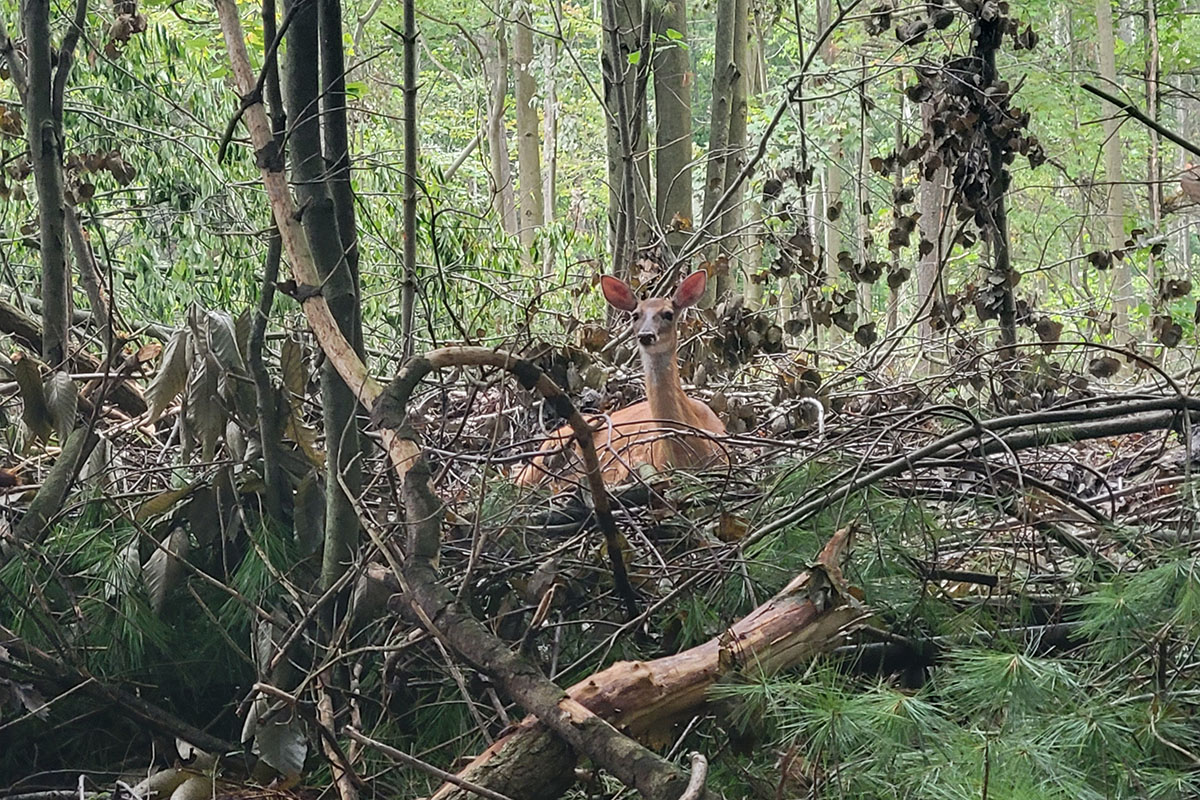
The property owner’s main concern was to bring in more deer for hunting season. He noticed less movement in the denser areas of the forest. A question we are often asked is if our equipment scares off wildlife during the harvesting process, in case it falls during or near hunting season. We can assure you that deer are not put off by our movement and noise. In fact, we’ve had deer eating on tree tops only a few yards from where we’re cutting.
By thinning the forest, it allows more light to come in, which in turn allows the smaller trees to thrive. The tree tops, limbs and leaf debris left from in-woods processing is a delicacy for most wildlife. So the mess left behind brings in more wildlife movement and improves the overall ecosystem on the property.
Step 2: Standing Timber Assessment
After answering the property owner’s questions and getting an idea of what they wanted for their property, we stopped out to assess the property and tally the types of harvest-worthy trees to create an estimate. The timber assessment process took approximately two days for a property of this size. Every property is different, so we make sure to always do an on-site assessment prior to coming up with a contract agreement.
Step 3: Contract Agreement and Down payment
Charlie met with the property owner and verified their identification and ownership status. Then they reviewed the assessment before finalizing a contract. The price agreed to was figured by calculating current market rates for timber sales to local mills, as well as the expenses of labor and equipment usage.
Step 4: Start Project – Final Payment in Full
We started this project in July 2024 a couple of weeks after the signed contract and down payment was made. The start and finish of a project is never set in stone, it all depends on weather conditions. And Michigan loves to throw surprises at us, so we are at the mercy of mother nature. This July did have a few rainy days, but we were able to work around them to get this project going in good time.
Trailway Clearing
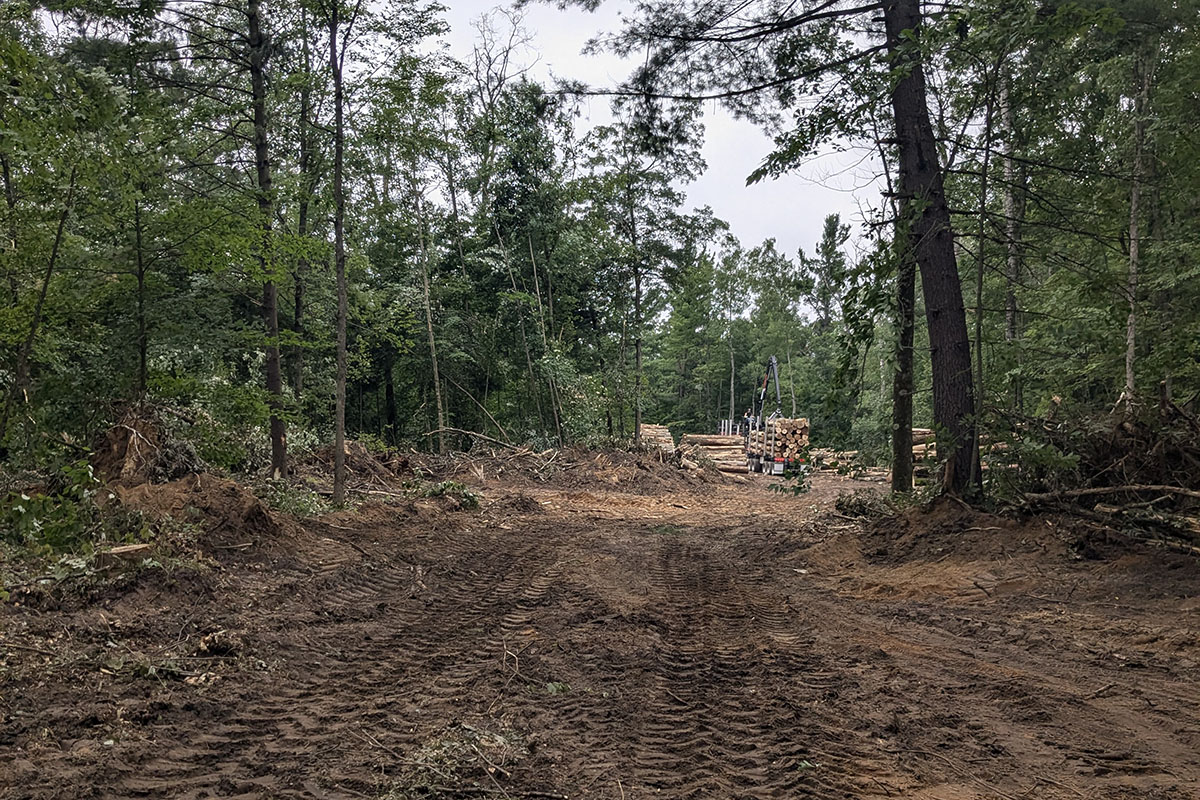
To start this timber harvesting project, we brought in a dozer to widen a path and create areas to stack the harvested logs and to give clearance for logging trucks to load for transport to the mills we work with. This leaves the area at the beginning of the access point more open. As we move back further into the property, we use the dozer to widen the trails enough for the harvester and the forwarder to transport freshly processed timber to the access site. This includes removing trees and stumps on the edge of the trailway.
In-Woods Processing
While working down the main trail, there are select spots that we chose to thin out approximately every 50 yards to allow light into the forest and pull the matured trees for harvesting. The quality standing timber we removed for sales to mills ranged from a diameter from 6 inches to 20 inches. By using our John Deere Wheeled Harvester, we perform in-woods processing of the standing timber. The harvester cuts the tree near the trunk, then pulls it through to strip the limbs, and cuts the tree into 8 foot logs and is stacked for pickup by the forwarder machine.
There were evident signs of oak wilt on some of the trees. We removed those as well, though they are not used at most mills. Some higher grade oak trees affected by wilt can be used for pallet wood. We sell the lower grade timber in 8 foot logs for firewood. By removing the diseased trees, it prevents the spread to trees that aren’t infected so they can grow to maturity and be harvested in the future.
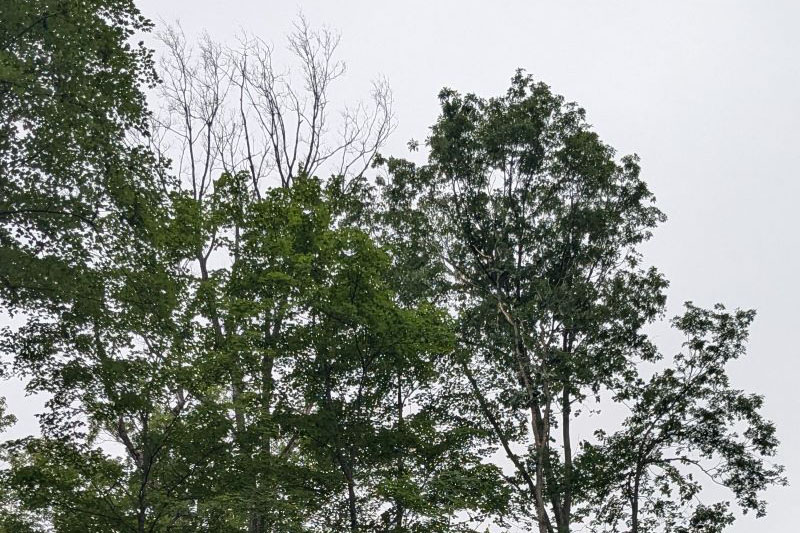
Step 5: Project Completed
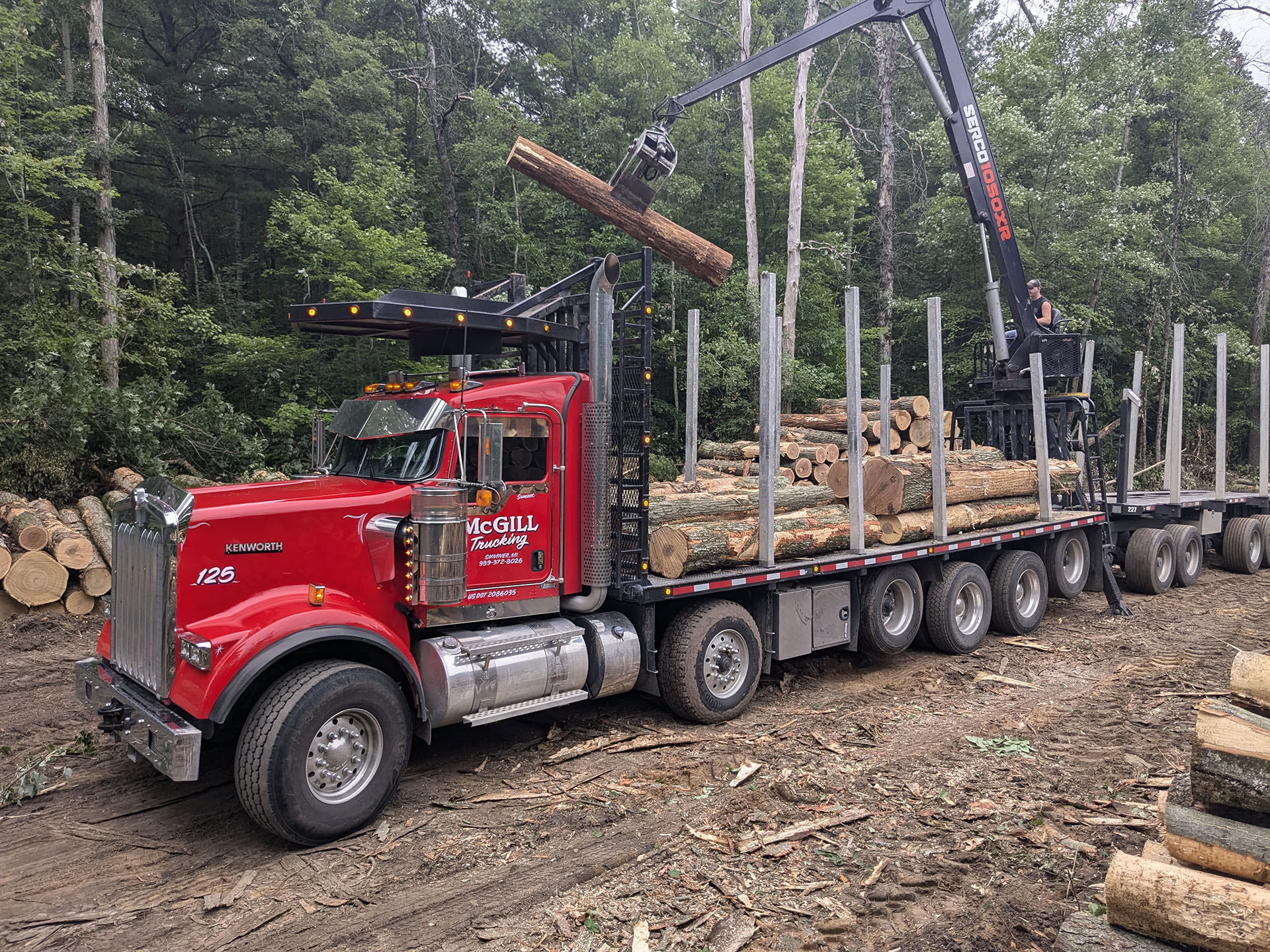
Once the property was thinned throughout as outlined on the contract agreement, we removed final piles of timber. Then we packed up and hauled out our equipment, including the harvester, loader and dozer. Tree tops and limbs were left to help sustain the wildlife. We called the property owner to let them know everything was wrapped up.
This project in Morley took 4 weeks to complete, from the beginning of trail clearing and site staging to the processing and removal of approximately 700 cord of the timber harvested.
If you have a chunk of property with standing timber and would like to create a healthy environment for wildlife, contact owner Charlie Harris for an assessment by calling (616) 773-4655 or send us a message with any questions.

